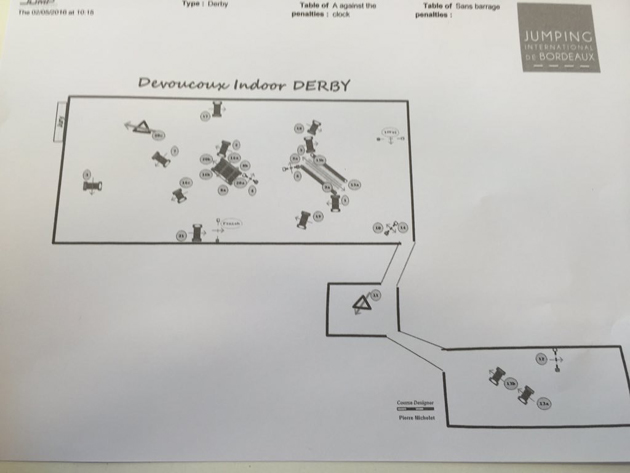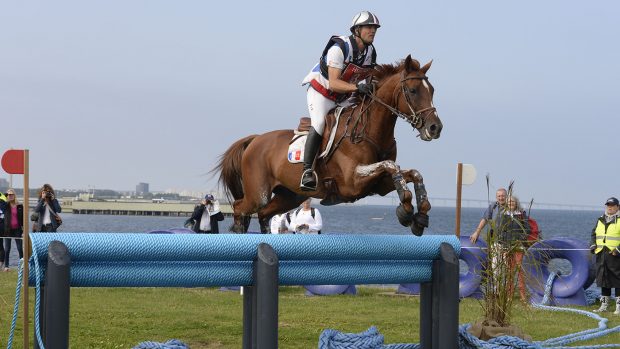Last night was the third running of the Devoucoux indoor derby at Jumping Bordeaux. This is one of several indoor cross-country classes run at high-profile World Cup showjumping and dressage shows through the winter, attracting a good field of event riders. Here’s what I learnt from being in Bordeaux yesterday…

1. Shows running these classes need to work out carefully how they fit into the timetable. Setting up a 21-fence course of mostly solid fences indoors, including banks and water, takes even an efficient course-designing and building team an hour or more.

Then riders need time to walk the track — one of the problems with the very first ill-fated Express Eventing competition was insufficient time for studying the course, which led to multiple eliminations and our top riders looking, frankly, stupid. This side of things all worked out well in Bordeaux — riders had around 20 minutes to walk the course, the class started on time and only one person made an error of course (jumping on and off the bank in the wrong place).
2. Time is also needed for a trial run. In Bordeaux, they set up most of the course the night before (when the show was not open to the public) and riders had a chance to jump through some combinations, helping designer Pierre Michelet ensure distances were correct, helping the build team check everything worked and helping horses and riders become familiar with the sort of questions being asked.
3. Experienced horses will come to the fore. The top three last night — Punch De L’Esques (ridden by Karim Florent Laghouag), Lesbos (Nicolas Touzaint) and Jolly Hope De Treille (Cedric Lyard) — all have championship experience. These types with plenty of mileage have the ability to lock onto fences quickly, as well as the level-headedness to deal with the atmosphere.
4. The atmosphere — oh boy, the atmosphere. Last night was A LOT OF FUN. The arena was pumping with music during the rounds, with the capacity 6,800-strong crowd cheering and clapping along. It was a really exciting evening and these classes are potentially a great showcase for the sport. They are a way to attract a new audience because they bring eventing into cities and to people who might usually only see dressage or showjumping.
5. Events with a linked warm-up have a particularly good site for these classes. In Bordeaux, horses steamed out of the main arena after the snail at fence 10, along the horse walk over a corner fence, on along it (with restaurants, crowds and tradestands just feet away on each side — pictured below) and into the warm-up for three fences there.

Then it was back along the track to the main arena and in again over the same snail fence (fence 14).

It added an extra dimension to the class, allowing people without main arena seats to get up close to the action, while those in the ring kept up by watching on big screens. Of course to do that, events also need another warm-up ring for competitors to actually warm up in. That one is amid the public areas too in Bordeaux.

6. And on the note of getting close to the action, this isn’t something we learnt in Bordeaux but the $75,000 Asheville Regional Airport Wellington eventing showcase in Florida, USA, tonight — an outdoor class featuring all three tests, but again an arena eventing format — involves riders jumping into and out of the VIP tent. How cool is that? We look forward to hearing how it jumps — you can check out the live streams at the links below.
Showcase showjumping live stream
Showcase cross-country live stream
Full report on the indoor derby and World Cup showjumping qualifier from Bordeaux in Horse & Hound magazine next Thursday (11 February).




